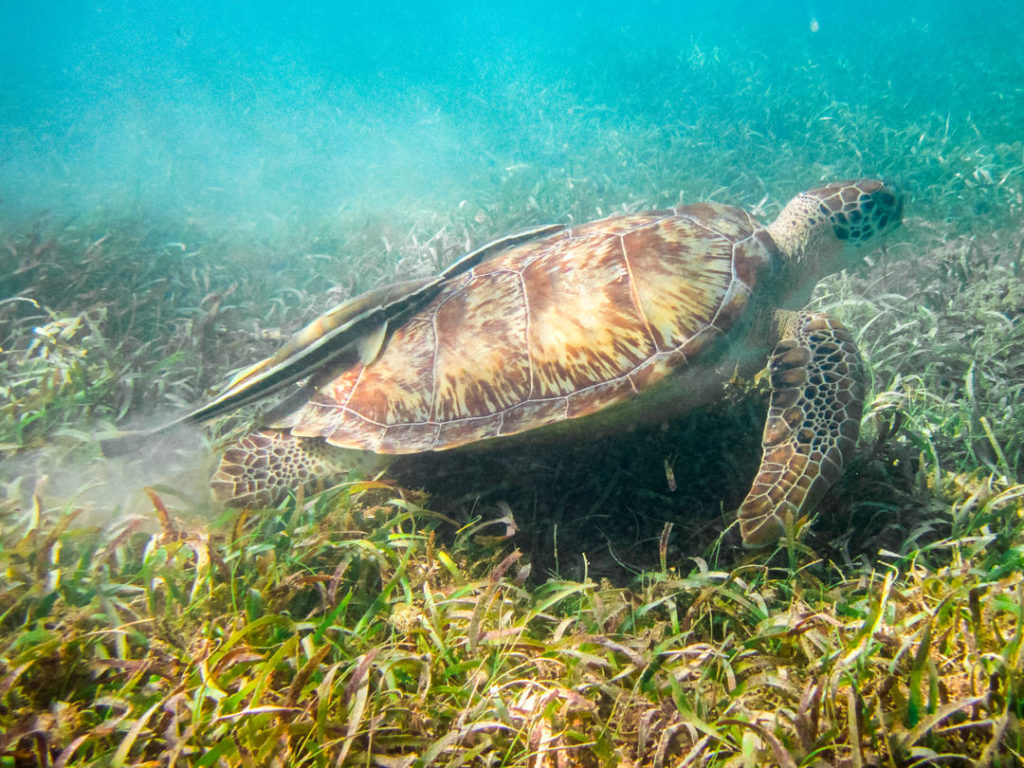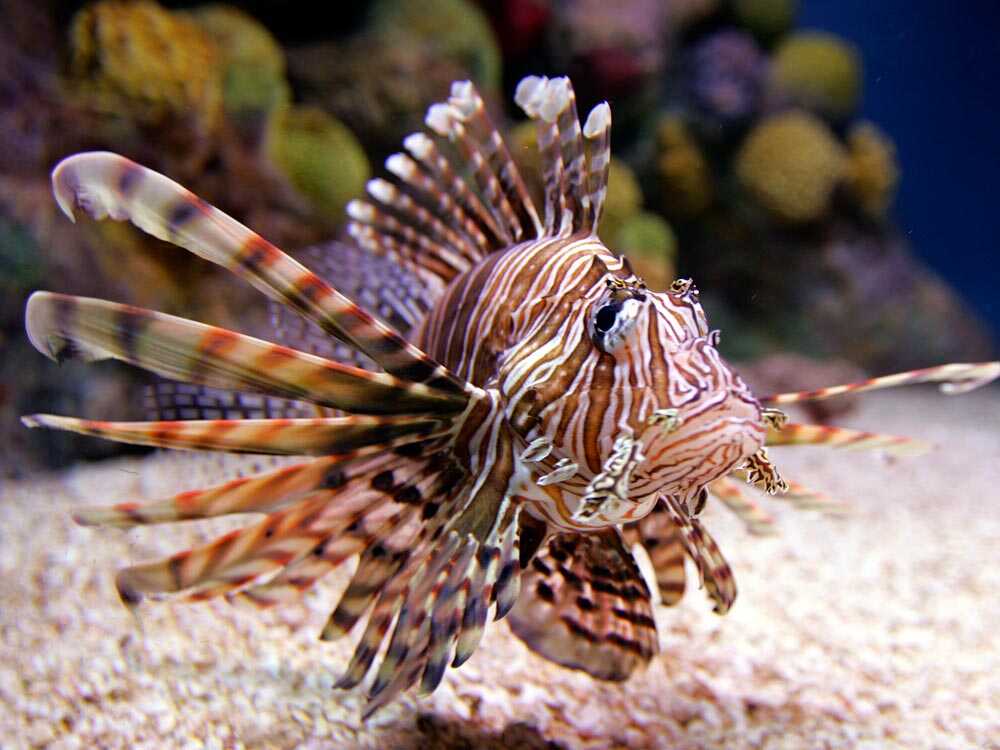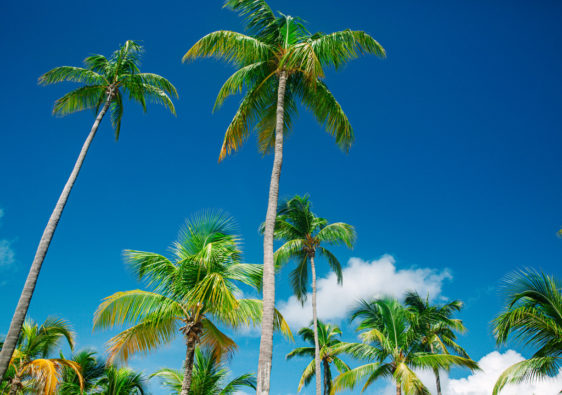The USVI (St. Thomas, St. John, and St. Croix + many smaller islands) are known for beautiful beaches and crystal-clear waters. They are home to a diverse range of land and sea animals. In this post, I’ll share a bit more about the types of animals you can see in the USVI and the importance of wildlife conservation efforts in the islands.
Land Animals
- Iguanas – One of the most iconic land animals in the USVI is the green iguana. These giant lizards can grow up to 6 feet long and can be found in trees, on the ground, or even on buildings. While they may look intimidating, they are harmless to humans and are a common sight on the islands.
- Mongooses – Introduced to the USVI in the 1800s to control the rat population, mongooses have become a common sight on the islands. They are known for their agility and speed and can often be seen darting across the roads.
- Donkeys – One of the most iconic land animals in the USVI is the donkey, which was brought to the islands in the 16th century and has since become a beloved symbol of the local culture. Donkeys are a famous sight for island visitors throughout the USVI, particularly on St. John and St. Thomas. Please don’t feed the donkeys.
- Goats – Wild goats were introduced to the islands in the 17th century and have since become established in the wild. While goats can be seen in many areas of the USVI, they are prevalent on the island of St. John. Please avoid approaching or attempting to touch wild animals, as this can be dangerous for both the animal and the visitor.
- Hermit crabs – Another common sight on the beaches of the USVI is the hermit crab. These tiny creatures are known for their colorful shells and can often be seen scurrying across the sand.
- Deer – The USVI is home to white-tailed deer in the forests and hills of St. John and St. Croix. These graceful creatures are a sight to behold and are a popular subject for nature photography.
- Bats While many people may be afraid of bats, they play an essential role in the ecosystem of the USVI. They are pollinators and seed dispersers and can be found in the caves and forests of the islands.
Sea Animals

- Fish – The waters surrounding the USVI are teeming with over 500 fish species, including snappers, groupers, and parrotfish. Snorkeling and diving are popular activities for those who want to see these beautiful creatures up close.
- Some of the most commonly seen fish in the USVI include:
- Parrotfish: These brightly colored fish are often seen near coral reefs and can be easily identified by their parrot-like beaks. Parrotfish play an essential role in maintaining healthy coral reefs by feeding on algae and dead coral and excreting sand, which helps to create new reef structures.
- Blue tang: This vibrant blue fish is a common sight among snorkelers and divers in the USVI. Blue tangs are known for their small size and sleek, streamlined shape and can often be seen darting in and out of coral formations. If you’re familiar with Finding Nemo, Dory was a blue tang.
- Yellowtail snapper: This popular game fish can be found in shallow waters near reefs and can be recognized by its distinctive yellow tail fin. Yellowtail snapper are known for their mild flavor and are a favorite among local fishermen.
- Nurse sharks: Despite their name, they are relatively harmless to humans and can often be seen resting on the ocean floor during the day. These slow-moving sharks are typically found in shallow waters near reefs. They can be identified by their dark coloration and barbels on their snout.
- Barracuda: These large, predatory fish can be found in deeper waters around the USVI and are easily recognized by their long, pointed teeth and sleek, silver bodies. While barracuda are not typically dangerous to humans, it is crucial to avoid provoking or approaching these animals, as they can be unpredictable.
- Some of the most commonly seen fish in the USVI include:
- Sea Turtles – The USVI is home to several species of sea turtles, including hawksbill and green sea turtles. These endangered animals are a beloved part of the USVI’s natural heritage and are protected by conservation efforts. While it may be tempting, please don’t touch the sea turtles or their remora buddies.
- Dolphins and whales – The waters of the USVI are home to several species of dolphins and whales, including the bottlenose dolphin and humpback whale. Whale-watching tours are a popular activity in the USVI during the winter months.
- Reef Octopus – One fascinating fish visitors may encounter while snorkeling or diving in the USVI is the reef octopus. Reef octopuses are members of the cephalopod family, including squids and cuttlefish. These intelligent and highly adaptable creatures are well-known for their ability to change color and shape to blend in with their surroundings and hide from predators. They live in coral reefs and other rocky habitats, where they feed on small fish and crustaceans. These creatures are masters of disguise. Their ability to change color and texture allows them to blend seamlessly into their environment and evade predators.
- Sharks – While many may be afraid of sharks, they are a vital part of the marine ecosystem in the USVI. Several species of sharks, including the nurse and reef sharks, can be found in the waters around the islands.
- Rays – Stingrays and eagle rays can be found in the shallow waters of the USVI, particularly around St. John and St. Thomas. These graceful creatures are a lucky sight for snorkelers and divers.
- Jellyfish – While jellyfish may not be the most beloved sea creatures, they are an unique part of the marine ecosystem. The USVI is home to several species of jellyfish, including the moon jellyfish and the sea nettle.
Birds

- Hummingbirds – The USVI is home to several species of hummingbirds, including the green-throated carib and the Antillean crested hummingbird.
- Pelicans – Pelicans are common in the USVI, particularly around the beaches and harbors. These large birds are known for their distinctive pouches and can often be seen diving into the water to catch fish.
- Frigatebirds – The magnificent frigatebird is a large, dark bird with a wingspan of up to 7 feet. Known for their aerial acrobatics, they can often be seen soaring high above the waters of the USVI.
- Egrets and herons – Several species of egrets and herons can be found in the USVI, including the great egret and the green heron. These graceful birds can often be seen wading in the shallow waters around the islands.
- Caribbean parrots – The USVI is home to the endangered Puerto Rican parrot, also known as the Caribbean parrot. These colorful birds can be found in the forests of St. Croix and are a part of the USVI’s natural heritage.
Endangered Species in the USVI
While the USVI is home to diverse wildlife, several species are currently endangered or threatened. One of the most well-known is the hawksbill sea turtle, whose population has declined due to habitat loss and hunting. The USVI has implemented measures to protect this species, including strict regulations on fishing practices and the creation of protected areas where the turtles can nest and feed.
Another endangered species in the USVI is the Virgin Islands tree boa, a small snake found only on St. Croix. The population of this species has declined due to habitat loss and the introduction of non-native predators, and conservation efforts are underway to protect this unique species.

Responsible Wildlife Viewing
While observing wildlife in the USVI can be a rewarding experience, it is necessary to do so responsibly and sustainably. Visitors should avoid disturbing nature, particularly during mating or nesting season, and not attempt to feed or touch animals. Please respect protected areas and follow local fishing and hunting regulations.
Invasive Species in the USVI
In addition to protecting native and endangered species, the USVI is also working to address the threat of invasive species. These non-native plants and animals can harm the environment and disrupt the delicate balance of ecosystems.
One example of an invasive species in the USVI is the lionfish. This venomous fish is not native to our waters but has spread throughout the Caribbean. Lionfish feed on small fish and quickly decimate populations of other species, which can have a ripple effect throughout the food chain. As a result, the USVI has implemented measures to control the lionfish population, including organized fishing events and educational campaigns to promote the consumption of lionfish to reduce their numbers.

Another invasive species in the USVI is the green iguana, which was introduced to the islands as a pet but has since become established in the wild. Green iguanas can compete with native species for food and habitat and can also cause damage to buildings and infrastructure. Efforts are underway to control the population of green iguanas, including trapping and removal programs.
Visitors need to be aware of the threat of invasive species and take steps to prevent their spread. This includes not bringing non-native plants or animals into the USVI and being careful not to transport invasive species inadvertently on boats or other equipment.
By addressing invasive species, the USVI can help protect its unique and valuable ecosystems for generations to come.
Supporting Conservation Efforts
Finally, visitors to the USVI can support conservation efforts by donating to local organizations that protect the environment and wildlife. These organizations include Friends of VI National Park, the Virgin Islands Conservation Society, which supports a range of conservation initiatives across the islands, and the St. Croix Environmental Association, which works to protect the unique ecosystems of St. Croix through education, research, and advocacy. By supporting these organizations, visitors can help ensure the long-term survival of the USVI’s wildlife and natural beauty.
The US Virgin Islands offers a rich and diverse array of wildlife for visitors to observe and appreciate. It is essential to do so responsibly and sustainably and to support local conservation efforts. By taking these steps, we can ensure that the USVI’s natural heritage remains intact for future generations.



